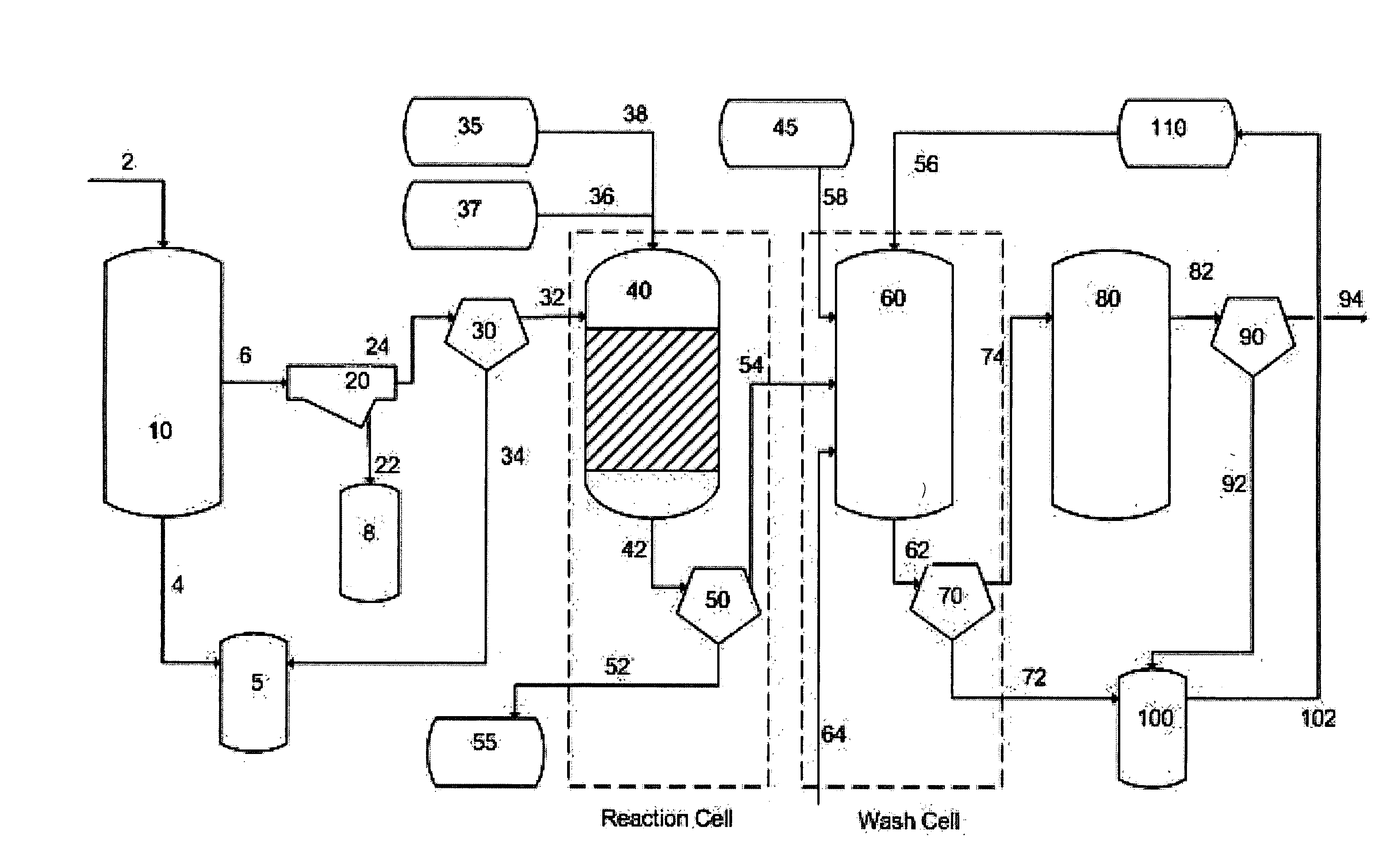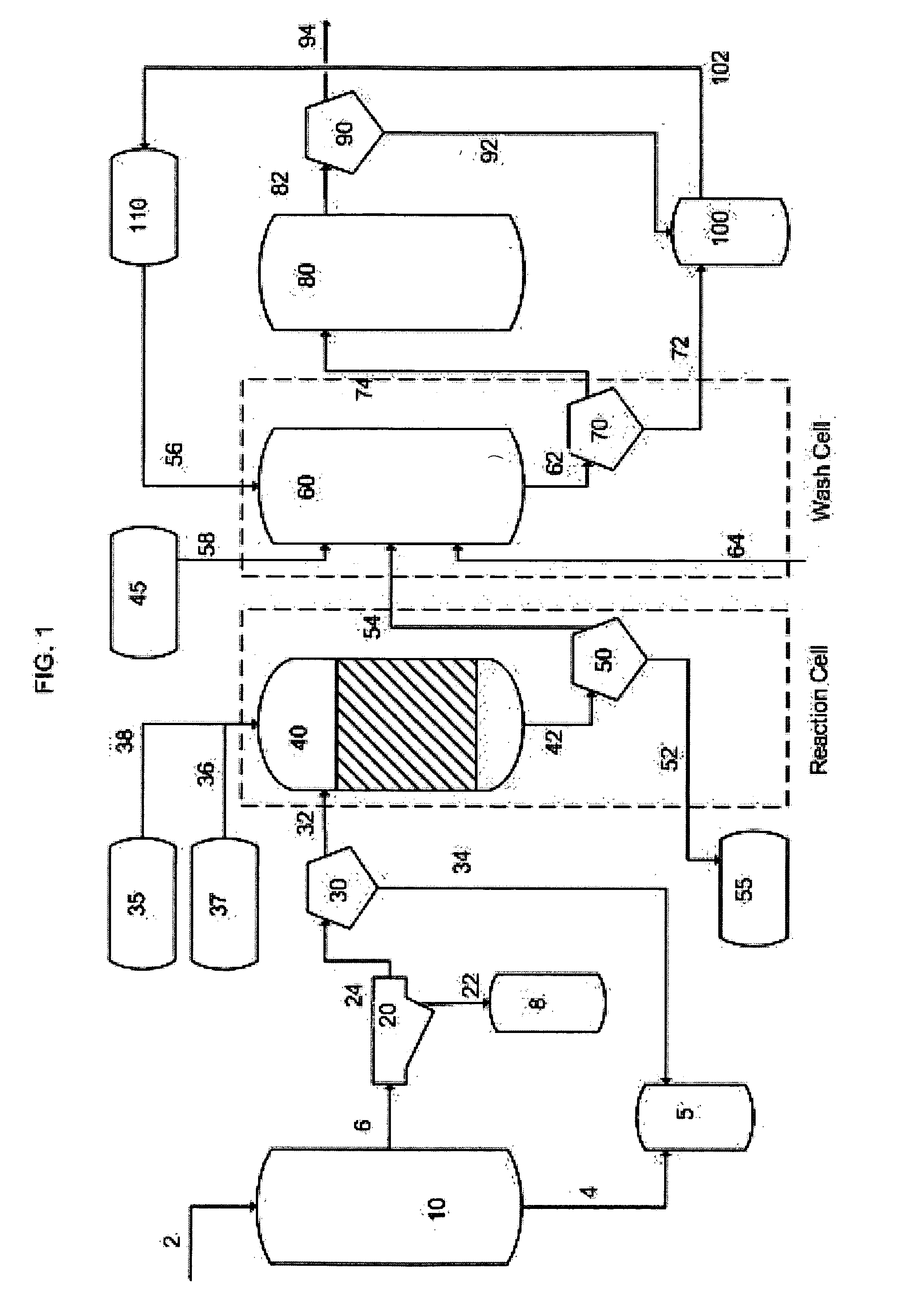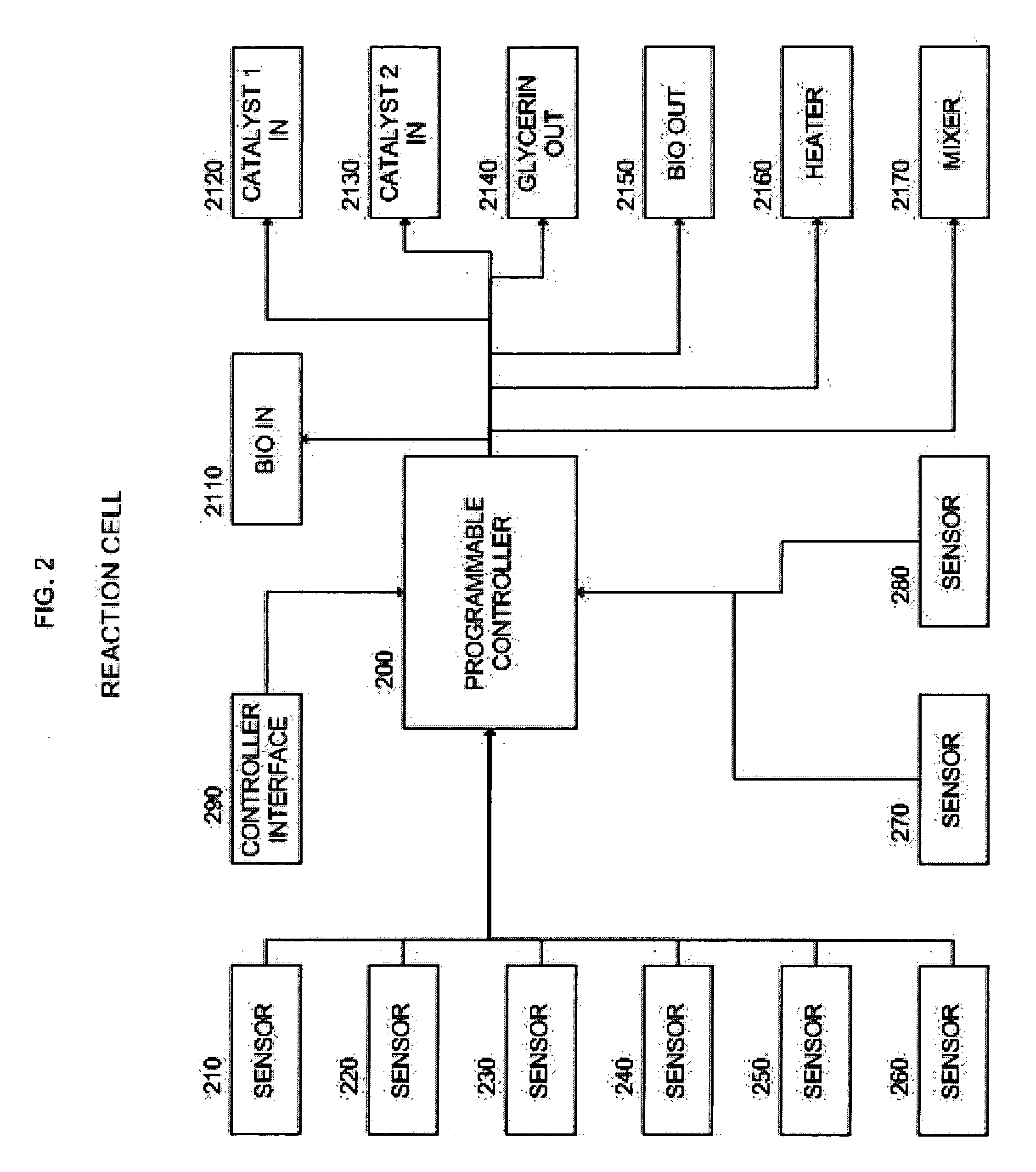Mobile biodiesel refinery
- Summary
- Abstract
- Description
- Claims
- Application Information
AI Technical Summary
Benefits of technology
Problems solved by technology
Method used
Image
Examples
Embodiment Construction
[0016]FIG. 1 illustrates one process for reclaiming spent cooking oil, in particular fast food frying grease by changing it chemically into biodiesel and glycerin in a mobile refinery. The process removes particulate contaminants and water. The contaminants are removed by passing through a series of self-cleaning filters and separators. In a particular embodiment, the spent oil passes through a self-cleaning strainer and heating tank, a catalyzing vessel that also titrates the proper amount of catalyst and monitors and removes the accumulated glycerin, a wash vessel that monitors and balances the pH of the biodiesel and cleans the fuel a final time to remove any remaining impurities. After the cleaning process, the fuel is forwarded to the delivery tank. On delivery, the biodiesel is filtered a final time, the amount and specifications of the fuel is logged by a computer. The byproducts are housed within the mobile refinery that can be taken to a central processing facility to allow...
PUM
| Property | Measurement | Unit |
|---|---|---|
| Flow rate | aaaaa | aaaaa |
| Level | aaaaa | aaaaa |
Abstract
Description
Claims
Application Information
 Login to View More
Login to View More - R&D
- Intellectual Property
- Life Sciences
- Materials
- Tech Scout
- Unparalleled Data Quality
- Higher Quality Content
- 60% Fewer Hallucinations
Browse by: Latest US Patents, China's latest patents, Technical Efficacy Thesaurus, Application Domain, Technology Topic, Popular Technical Reports.
© 2025 PatSnap. All rights reserved.Legal|Privacy policy|Modern Slavery Act Transparency Statement|Sitemap|About US| Contact US: help@patsnap.com



